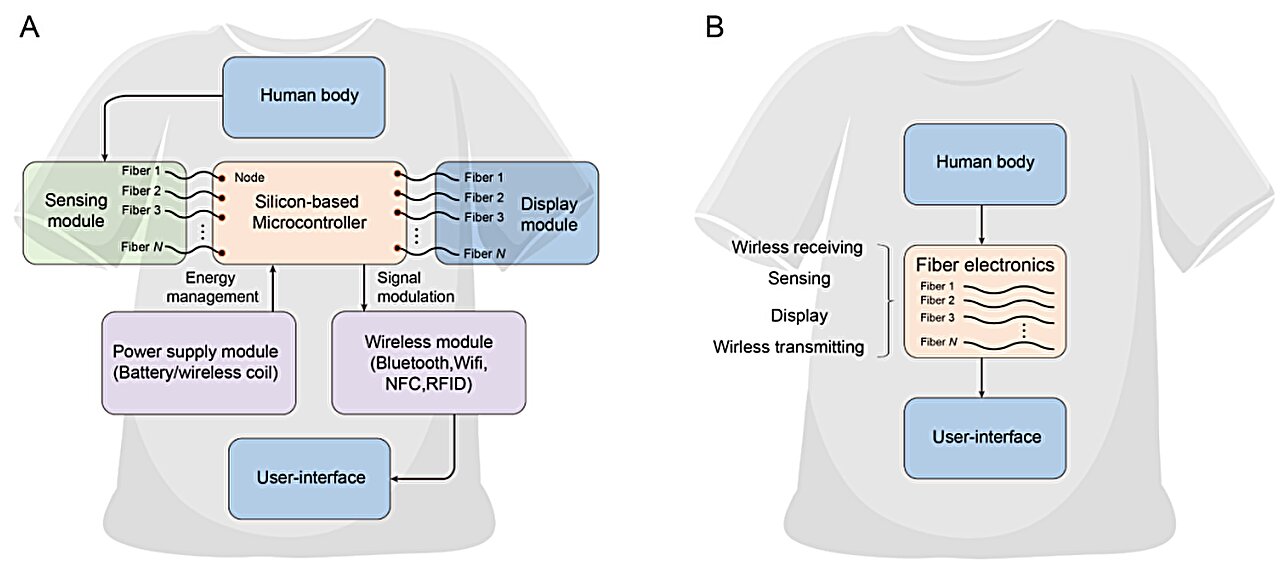
A team of materials scientists and engineers from Donghua University, in China, and the National University of Singapore, has developed a type of fiber that does not rely on chips or batteries to convert visual signals to digital transmissions as it interacts with the human body.
The paper is published in the journal Science. Yunzhu Li and Yiyue Luo with the University of Illinois Urbana-Champaign and MIT, respectively, have published a Perspective piece in the same journal issue outlining the work done by the team on this new effort.
Over the past several years, scientists have been trying to find a way to integrate electronic devices with textiles for such applications as clothes that can display colors, patterns or even messages. Unfortunately, previous efforts involve adding stiff batteries and chips to materials, making them too uncomfortable to wear. In this new effort, the researchers have found a way to get around these problems.
The new fiber developed by the research team has three layers. One serves as a core, triggering an electromagnetic field, another serves as a dielectric layer that holds electromagnetic energy obtained from the human body. The third works as an optical layer to visualize the electric field. In short, the new fiber works by capturing and using electromagnetic energy in the air and using the human body as a circuit.
When sewn into a textile and worn on the body, electromagnetic energy from the environment striking the fiber is converted to both radio waves and visible light. This allows the fiber to release signals when touched by a body part such as the skin of the chest or a finger. Then, by controlling the system in specific ways, the signals it emits can be programmed.
To test their fiber, the researchers stitched some of them into a shirt and used them to feed a processor that displayed a message on the shirt. They also added a keyboard that allowed tapping on the wrist to create and send messages. https://techxplore.com/news/2024-04-chipless-fiber-wireless-visual-digital.html







Recent Comments